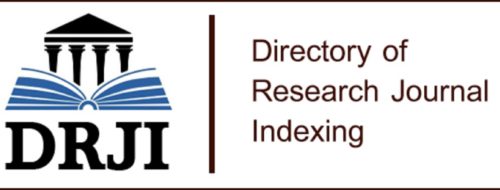ENERGY COMPETITIVENESS LAW IN ECUADOR
Keywords:
Optimization, nonlinear, power flow, loss electric, transformerAbstract
DOI: https://doi.org/10.46296/ig.v8i15.0256
Electricity consumption increases year after year, particularly due to population growth, as well as the growth of the industrial zone. The first relevant aspect to be considered is that an increased production of electric energy is associated with an intensification of CO2 emissions, so leading to global warming and climate change; especially when this source of energy is produced by conventional means. According to this, apart from the generation of clean energy, legal instruments such as the Long-Term Energy Competitiveness Draft Law must be promoted whose Technical and Economic Evaluation was evaluated in this research. The methodology combined qualitative and quantitative approaches: a bibliographic review was carried out in order to study the historical evolution of subsidies and tools such as SWOT were used to evaluate the current situation. The study design was documentary and descriptive with a quasi-experimental component by using data from secondary sources which was organized and analyzed with Microsoft Excel to present results through graphics and tables. The results showed that in a long term, the law will not only maintain the observed growth in the electricity sector, but also it will support the use of sustainable energy sources at low costs. Moreover, from a prospective point of view, it is expected that the law will attract both national and foreign investment to improve the growth of the sector and to increase the average of energy efficiency based on the implementation of clean technologies.
Keywords: Optimization, nonlinear, power flow, loss electric, transformer.
References
M. R. I. Caicedo, “Modelo de un sistema hibrido de generación distribuida para una nano-red de cc,” Sapienza: International Journal of Interdisciplinary Studies, 2022.
L. V. Abarzua, “La ley marco de cambio climático y el soterramiento de líneas eléctricas: Un enfoque integral para la resiliencia energética,” Revista de Derecho Administrativo, 2024.
C. P. Corral, R. Neco Caberta, L. A. G. Villalba, R. A. Valenzuela, E. A. Pastrana, and A. G. Jaime, “Modelo optimo estocástico de redes de distribución con generación distribuida,” 2016.
D. Pila, C. Quinatoa, L. Camacho, and J. Vaca, “Transient stability analysis of the ecuadorian electrical system: Case of the southern segment,” WSEAS TRANSACTIONS ON POWER SYSTEMS, 2024.
J. R. V. González, C. Quinatoa, J. Ortiz, and L. G. Camacho, “Evaluación de modelos de optimización convexos para minimizar perdidas en el sistema de distribución,” Revista Conectividad, 2024.
J. C. Ríos, C. Quinatoa, and G. Casillas, “Ubicación Optima de reconectadores en redes de distribución con generación distribuida utilizando algoritmos genéticos e índices de calidad de servicio,” Revista Técnica ”energía”, 2023.
J. L. V. Duran and J. F. M. Sachica, “Estudio de estabilidad de tensión en una red de distribución alimentada por un sistema IEEE 9 nodos a través de una DVPP (planta virtual de potencia de distribución),” 2016.
D. Feroldi and P. G. Rullo, “Operacion optima de redes de distribución activas con alía penetración de energías renovables: aplicación a la red IEEE 33,” 2022 IEEE Biennial Congress of Argentina (ARGENCON), pp. 1–8, 2022.
L. F. Gaitán-Cubides, J. D. Gómez-Ariza, E. Rivas-Trujillo, and F. J. de Caldas, “Análisis cuasi dinámico de la inclusión de generación distribuida en sistemas eléctricos de potencia, caso de estudio: Sistema IEEE de 30 nodos,” 2018.
G. C. López, “Metodología general para la planeación y optimización de las redes de distribución considerando la generación distribuida,” 2019.
H. V. Y. LEMA, “Sintonización de los parámetros de un d-statcom para la estabilidad de voltaje con presencia de generación distribuida,” Revista Técnica ”energía”, 2025.
R. D. Z. Lozano and C. A. M. Rincón, “Integración de recursos energéticos distribuidos a través de una VPP: Caso de estudio sistema de distribución basado en ieee 37 nodos,” 2016.
A. J. V. Piraquive and D. F. B. Restrepo, “Análisis del impacto de la generación distribuida en un sistema IEEE de 37 nodos usando Digsilent, Atp Y Matlab,” 2017.
P. L. Querini, F. V. García, E. V. Fernández, and O. J. A. Chiotti, “Modelo de optimización de coaliciones de microredes eléctricas,” Iberoamerican Journal of Industrial Engineering, vol. 9, pp. 182–199, 2017.
Alex, P. Vicky, C. Alexander, C. Luis, O. J. Q. Carlos, and Chasi, “Optimization model for coordinated multistage planning of the generation-transmission system with demand forecasting using neural networks,” in Proceedings of the 4th International Conference on Electronic Engi-neering and Renewable Energy Systems—Volume 1 (Antonio, M. Adel, R. Abdelhamid, C. M. H. Bekkay, and Gagliano, eds.), pp. 573–581, Springer Nature Singapore, 2025.
O. F. O. Sastoque and D. Casas, “Análisis del comportamiento eléctrico del sistema de distribución IEEE de 34 nodos usando un compensador estático de distribución (dstatcom) diseñado en atp/emtp para la mitigación de sags y la mejora del factor de potencia,” 2015.
G. A. Schweickardt, “Optimización de la inyección de potencia desde micro generación distribuida en sistemas eléctricos de distribución de baja tensión. desarrollos teóricos de un modelo hiperheurıstico,” Lampsakos, 2018.
E. B. B. Suarez and C. A. P. Granados, “Ubicación Optima de generación distribuida ante variaciones de carga y recursos energéticos utilizando algoritmos genéticos,” 2017.
Published
How to Cite
Issue
Section
License
Copyright (c) 2025 Scientific Journal INGENIAR: Engineering, Technology and Research

This work is licensed under a Creative Commons Attribution-NonCommercial-ShareAlike 4.0 International License.

















